
INCA ASTRONOMY: The Inca civilization in Peru gave great importance to astronomy. They were the only culture in the world that defined the constellations of light and darkness. The Incas not only identified individual constellations and stars, but also assigned them a purpose. They believed that everything in our world and its surroundings was connected. Contemplating a starry night sky is magical. People have always been fascinated with the stars and tried to find meaning in what they saw in the sky.
Astronomy was one of the most important studies for the Inca civilization and, of course, they developed it very well. They were able to define constellations, stars, the passage of time, the change of seasons, etc. The Inca city of Machu Picchu is completely built according to the sun; The same goes for the old buildings in the city of Cusco, whose streets were designed to mimic their constellations.
The Incas flourished in the Andes mountains of South America from the 12th to the 15th century. They have a great empire that stretched from present-day Colombia to Chile. The cult was very important to them and they had a complicated religion, closely linked to Inca astronomy. The Incas worshiped various gods, including Viracocha (The Creator), Inti (The Sun), and Chuqui Illa, the god of thunder. They also worshiped the huacas, spirits believed to inhabit any notable phenomenon, including large rocks, trees, streams, or waterfalls.

In general the sky was very important for the Incas. Both the moon and the sun were seen as gods and built extravagant pillars and temples with great precision so that these “celestial bodies” pass over the structures or through windows on specific days. The most crucial events for the Incas generally involve sunrise and sunset, the moon and the stars.
Astronomy was very important for the Inca civilization, partly due to the importance of agriculture. Astronomy was used for agricultural purposes. Cusco, for example, is in a radial plan, imitating the sky and indicating specific astronomical events on the horizon. Similar to the ancient Egyptians, this was a culture based on the horizon. They built carefully placed pillars in mountains and hills overlooking Cusco, so when the sun rose or set between these pillars, they knew they had to plant at a specific altitude.
When looking at the stars, the Inca noticed many animals and other representations of his daily life. They believed that Viracocha had ensured that each animal had a corresponding star and that all living things were protected. Grouping these stars into constellations became very important for the Incas.
The Inca classified the constellations into two groups. The first and most common groups of stars were linked in a way to connect the dots to create images of animals, gods, heroes and more. These constellations were considered inanimate. It was especially believed that a group of stars known as Pleiades was influential on animal welfare. The Pleiades were not seen as a major god for the Inca, but they saw him as a huaca to which the shamans would make regular sacrifices.
The second type of constellations could only be observed when there were no stars: they were dark spots or spots on the Milky Way. These dark spots were considered live animals (animated). It was believed that animals lived in the Milky Way, which they considered a river. The Incas were one of the few civilizations that could locate their constellations without the presence of stars.

Some popular constellations of animals that identified:
* Mach’acuay – The Snake
* Hanp’atu – The Toad
* Yutu – The Tinamou
* Urcuchillay – The Flame
* Atoq – The Fox
The Inca worship of the stars and the dark constellations shows us that this culture believed that everything around it was connected. Heaven had a very special meaning in the management of this civilization and impacted everyday life. Even the construction of the famous site of Machu Picchu is connected to the stars. Archaeological and ethnological studies now suggest that Machu Picchu was a sacred ceremonial site, a site of agricultural experimentation and an astronomical observatory.
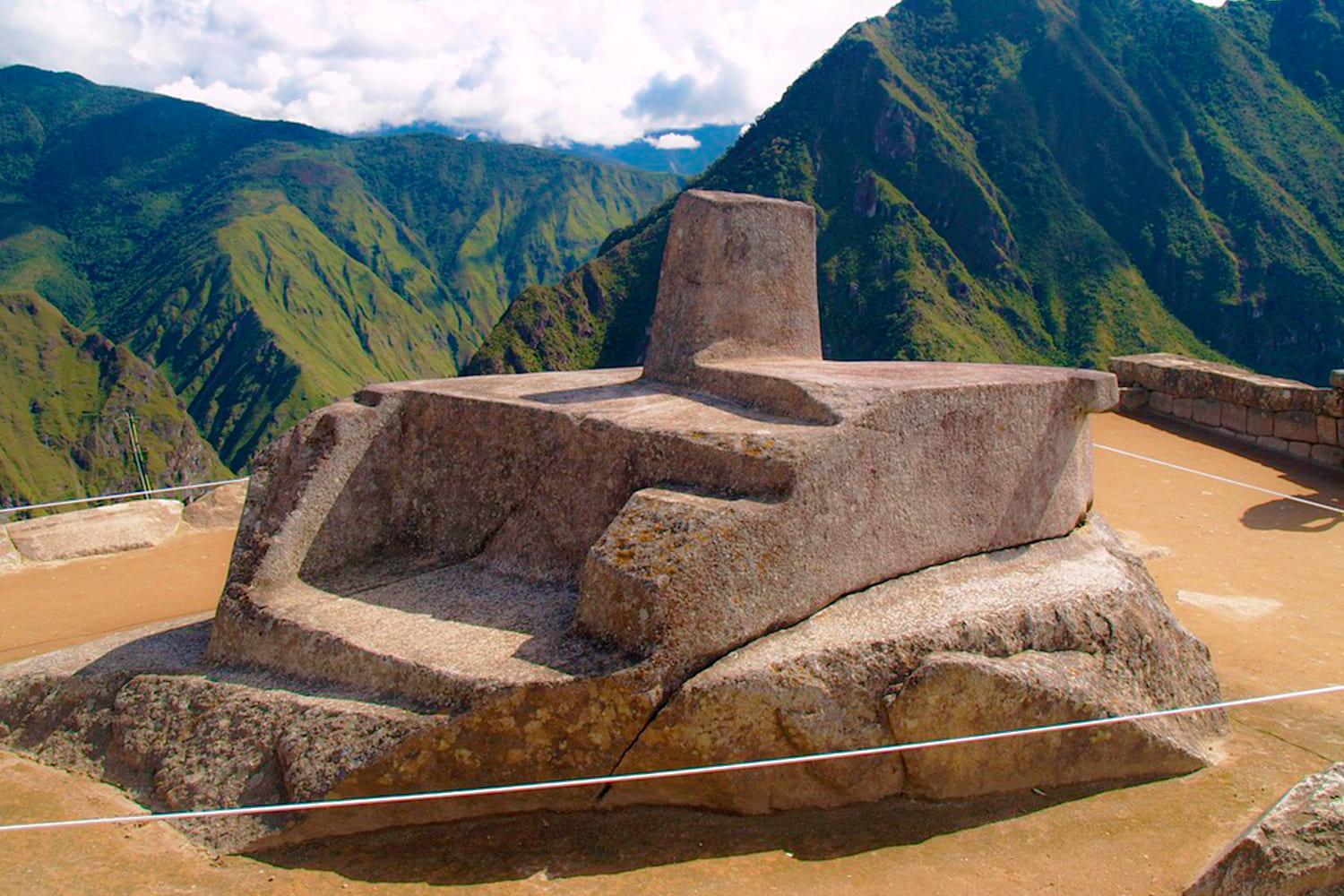
Perhaps one of the chroniclers who has described the prolixity of the concept of astronomy and its interpretation is undoubtedly Pachaquti Yaque Salcamayhua, who in a gold plate summarizes the main deities and signified from the point of view of the religion and astronomy of the Andes of Peru, which is still in practice.
The Santacruz Pachacuti chronicle has an objective, namely, to demonstrate the monotheistic character of the Inca religion by the glimpse of natural reason alone and, consequently, to vindicate the religious and rational condition of the Perulero Indian.
The chronicler cacique Santacruz Pachacuti is a character born in the late sixteenth century and apparently died on an unknown date in the first half of the seventeenth century. Author of a List of the Antiquities of this Reyno del Piru, of brief length but with valuable ethnohistorical and philosophical information. Possibly he was born in Orcosuyo, at the end of the 16th century. He was a cacique belonging to the group of the Collahuas, from the Altiplano region or Collao plateau.
The List of Antiquities of this Reyno del Piru, is written in an embryonic Castilian, assortment of phrases in Quechua and Aymara, is a compilation of Inca traditions, accompanied by valuable drawings. The work must have been written between 1620 or 1630 (others say in 1613), and was published only in 1879 by the Americanist and Spanish scholar Marcos Jiménez de la Espada, with two other chronicles, under the title of Three Relations of Peruvian Antiquities. The original is currently in the National Library of Madrid and there is an earlier edition, in English, made by the British historian and persevering globetrotter Sir Clements R. Markham in 1873.
The Relationship in each chapter is a song about the life of an Inca. The collas were enemies of the Incas, but Santa Cruz Pachacuti shows respectful rectitude in his narration. This serene attitude of his contrasts sharply with the feverish one of Guamán Poma and must have been motivated by nostalgia for the Inca past in the face of the misfortunes of the colonial moment. His work in form is similar to that of Guamán Poma de Ayala, in the lack of language and in the expressiveness of the drawings that illustrate the text. But it contrasts at heart, because it lacks a propositional idea. At most, it merely recreates a lost past. But in this recreation of the past, not only nostalgia vibrates latent, but also the vindication of a mythical-poetic world that overcomes the material destruction of indigenous culture.
Every symbol is a sign, but not every sign is a symbol. That is, the symbolic world is loaded with being, values and metaphorical language, with perceptual intuition, it turns out to be internal to the thing itself. The symbolic is primary grasp of the world, it speaks of the eternal in the world and in man. Furthermore, it contains a spiritualistic metaphysics. It should not be forgotten that pre-Columbian man is deeply religious and handles the numinous language of symbols. He lives in the maximum context of a natural metaphysics, he lives the inexpressible in the expressible, he develops in the dimension of the unverifiable. It is highly significant that these two Indian chroniclers resort to profuse drawings to convey ideas. It is as if the communicational structure of ancestral symbolic thinking reclaims its space and right of existence. It would be a way of philosophizing mythocratic, typical of ancient civilizations, together with mysticism, religion, metaphor and symbolism. The communication par excellence for logocratic thinking is idiomatic, but for mitochromatic thinking it is non-idiomatic (rites, art, mystique). Here in these two works it is shown that the logical sense cannot decree the nonexistence of other senses (perceptual, intuitive, emotional, aesthetic, ethical, religious and metaphysical). In any case, it is well known that logic regulates how one should think, rather than what one should and can think. This is that in his works the abstract concept of logic coexists with the artistic concept of the symbol. It is not for nothing that mythocratic thinking is deeply aesthetic while logocratic thinking is eminently logical.
In other words, the drawings place us before a problem of a metalogical nature, where knowing is not copying or conceptualizing, but interpreting. And this leads us to a dimension in which knowing is molded on the interpretation of reality. The interpretation reaches the real, because the real has to do not only with what is immanent to the interpretation, but also with what is transcendent to it. But there is something else. And it is that both texts demonstrate that in pre-Columbian Andean thinking, symbolic thinking has several dimensions, namely: aesthetic, mystical, celebratory, and logical. That is why it is erroneous to maintain that the Andean person feels before he knows or thinks about reality, because by means of the significant perceptual sense he also thinks and knows reality. That is why it is of philosophical interest one of the most suggestive drawings of a composition of images that apparently would have appeared on the main wall of the main altar of the Cuzco temple in Coricancha and that represents the Andean world view or the world map.
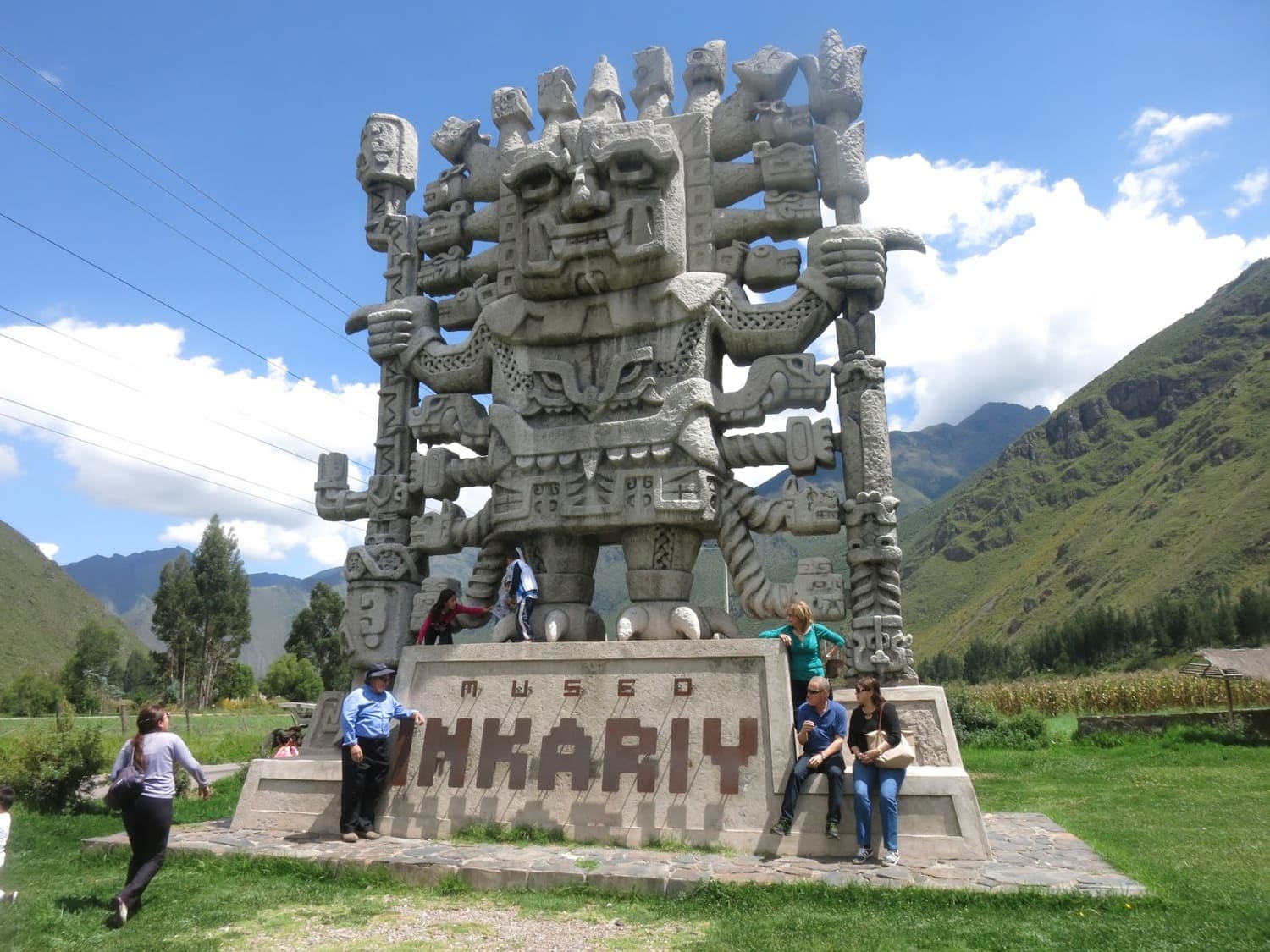
Now, among the drawings presented by Pachacuti Yamqui’s work is the main wall of the main altar of the Cuzco temple in Coricancha and which supposedly represents the Andean world view or the world map. He called such an engraving Chakana, which means a bridge or ladder and which allowed man to unite with the cosmos. It is actually a figure of four bridges joined together in the shape of a twelve-pointed square cross and with the image of a deity in the center. This symbol is millennial, it has been found in the Archaeological Complex of Ventarrón, Pomalca district, in Lambayeque, and it has the shape of a Chakana, boasting the surprising antiquity of between four to five thousand years, and would demonstrate the idea of cosmic separation between the World and the Computer, the immanent and the transcendent. It has been said that in its geometry the Chakana contains the concept of the unreal number Pi and the real number twenty-seven. In any case, it is not certain that such knowledge was characteristic of pre-Columbian knowledge, and what is important here is how Pachacuti Yamqui calls engraving. For him it is a bridge, a communicating link with another dimension. It is not surprising that an agrocentric civilization has to be cosmocentric within its desire to dominate nature. Consequently, it is not strange that Pachacuti Yamqui when describing the content of the Chakana includes stellar elements. But Andean cosmography is not the product of a primordial scientific interest, but of a sacral, oracular, theurgic and mantic scheme. In other words, the cosmographic is subsumed by the history of its religion and its desire for the numinous. There is no doubt that the chakana describes a limit situation of man, that is, revealing the sacred, cosmic and transhistorical, which indefinitely repeats the celestial archetypes. In other words, the chakana is the record of what the shaman or amauta manage to see or know in the mystical trance or speculative meditation. But what the author is going to offer us is the first syncretic image of Andean religiosity, since it mixes Andean elements with Christian elements. The result is a hybrid, a recomposition of the new image of the world that Andean men have after the Conquest.
Indeed, the world is organized according to the Andean principle of Hanan-Hurin applied in two dimensions, the horizontal and the vertical. Two axes, Hanan and Hurin, divide the space into four different fields. The lower fields are arranged inversely with respect to the upper space. Such quadripartite structures are found in other Andean spatio-temporal representations. The Order is headed by the deity of Viracocha Pachayachachic or Lord of the Universe, computer of everything that exists, in which the human couple is a harmonious part of the whole. It is curious that his name is mentioned on an ovoid figure, which could allude to the cosmic egg as the axis of the world and of all the celestial regions. The representations of the Sun and the Moon, as well as other stars, are not astronomical figurations but religious characters. The frame and contour of Pachacuti’s drawing, as well as the distribution of his figures, resembles the altarpiece of a Christian church, which leads us to think that he prefigured it so that it can be accepted by a Spanish audience.
It would be, then, the Altarpiece of Ordination and not of Creation, where the Universal Lord orders everything to the right and to the left, in pairs. It is striking that the Ucu Pacha or the world below is not consigned, especially since the Incas considered that a way of life similar to that experienced in this world continued after death. This omission leads us to suppose that such a world may be concealed in the drawing of the mamapacha or the mamacocha, as means of access to the Ucu Pacha. Tradition tells that Manco Cápac had fixed the image of Wiracocha Pachayachachic on a wall of the Coricancha, and that Mayta Cápac had that plate renewed by adding various figures around it. According to Santacruz Pachacuti, the Coricancha painting should teach us to remember the exclusive power of Wiracocha in opposition to the very inferior powers of all things in the world, who were but his creatures and who, therefore, must refrain from worshiping any of its creatures, although it was the highest, that is, that the Peruvians had to despise the polytheistic cults (for example, the cult of the sun).
If the Inca Garcilaso wanted to save the social organization of the Inca, especially the principle of justice, and the Andean people of the sixteenth century organized magical ceremonies in the huacas of the Taqui Oncoy to expel the invader, Santacruz Pachacuti wanted to save their religion by expunging the polytheism. The difference with Guamán Poma is that he attributes the introduction of solar idolatry to the Incas themselves and frees from that defect the pre-Inca Indians who, according to him, worshiped a single god. Our Indian chronicler, Santacruz Pachacuti, apparently intended to prove by interpreting the cosmogonic altarpiece that the Incas were not idolaters, worshiped a single god, and disliked polytheism. If this is the case in practice, he would have no chance of success, because his work is written in the midst of the campaign to extirpate idolatries, the memory of the Toledo chroniclers who attributed idolatrous character to the Inca religion remained, and, furthermore, It was known that a pantheon of tectonic gods or sustenance divinities such as water or Illapa, and earth or Pachamama existed alongside the Uranian god Wiracocha. At the time of the Conquest, the divinity that received the most attention was Illapa, and eighty years later, that is, when Santacruz wrote its chronicle, the resistance of Andean religiosity was concentrated in Wiracocha. Such a strategy did not work, in time said divinity would be forgotten and its place would be occupied by the Christian divinity.
In other words, Santacruz tries to make a Christian reading of the Andean cosmogonic altarpiece, with a single universal and creative god, who rejects all polytheism and who does not have the object of persecuting the cult of Wiracocha because basically it is the same Christian god. But it is very plausible that in the drawing our Indian chronicler has purposely omitted other original Andean representations, such as the Ucu Pacha or Hell, and forced the religious representation of the Inca to make it compatible with the Christian one. But the ethnological and historical confirmation leads us, rather, towards a henotheistic religion, with a main god and several secondary divinities. Santacruz must have accepted Christianity acceptably, because in his drawing of the altarpiece there are no traces of the theogonic myth of the original chaos that must accompany an ordering divinity.
In short, Santacruz Pachacuti defines Viracocha as creator god, omnipotent and unique in front of his creatures, as if it were the proper understanding of those Gentiles, because this statement had the scope to defend their own with the argument that the Incas reached such understanding by the natural light of reason. Consequently, they only lacked the light of revelation. What follows from this argument he did not say but it follows, that is, once Christian revelation has been reached, they will be capable of self-government.
This frame is shaped like a wall from the Koricancha temple, from the wall of one of the short gabled walls. We see that the figures and legends are arranged in this frame like the sculptures or paintings in a Christian altarpiece and that they occupy the entire interior of the frame. We see that at the top the figures and legends evoke entities, that is, creatures from the sky, while the figures and legends that evoke objects from the earth occupy the bottom, up to a squared rectangle, similar to a tennis net or a piece of checkered tunic. Pachacuti has written the following legend on each side of this rectangle: “Collcampata and the house were all affixed (= a) with a gold plate, (the house) called (= a) Coricancha Huaçi”. “The house called Coricancha” (“huaçi” means “house”), is the Coricancha Temple of the Sun, in which, according to our chronicler, this alleged altarpiece would have been found. In this legend, the juxtaposition of Collcampata and Coricancha poses an interesting problem, the solution of which, however, is not essential to explain this part of the drawing. When gathering the words “house”, “collcampata”, and “coricancha” it is presumable that Pachacuti has mixed the reference to the Coricancha with another one to the “second temple of the Sun”, that is to the one that was in Sacsayhuaman and to which “the natives ‘They called Casa del Sol and ours the Fortress.
In the middle of the sky is the vertical oval that represents the gold plate of the God Viracocha Pachayacháchic. It must be emphasized that, according to Pachacuti’s concept, it is found in the middle of the figures. Pachacuti clearly affirms this essential point: “in the middle, where the image of the maker was.” Therefore, the creatures were around him: in all the round or around the plate (of the maker) they say that he put.
The handwritten inscriptions in Quechua, which are on each side of the oval and continue to the right of the frame, thus define God: “Image of Viracocha Creator of the World or image of the Principle or image that has Tunapa as steward. He points out saying: – This is a man, this is a woman, Which reminds him. Sun of the sun, Creator of the universe ”. All of these definitions and metaphors are part of the Catholic tradition. “Creator of the world”, “Image of the Beginning” refer to the first sentence of Genesis, to the creation of the world. “This is varan”, etc., alludes to the creation of man and woman, Adam and Eve. God has Tunapa as “steward” because Tunapa-Santo Tomás, according to Pachacuti, was an apostle, messenger, servant, that is, “steward” of Christ. “Sun of the Sun” is a Christian metaphor that means that God is the true Sun, that is, the true source of spiritual and material light, the one that makes the sun shine from heaven.

Above it, as we look at the drawing, there are five stars, with the legend “Orcorora, three stars all the same”. These stars form a cross that evokes the crosses that finish off the altarpieces or the covers of the churches. However I must point out that, according to Lehmann Nitsche, the star that is against the lower curve of the oval has been added by F. de Avila. If this is exact, Avila will have to be attributed that complementary anagogic combination.
Below the oval are four stars that form a cross in an inclined position. Two of them have the name saramanca and cocamanca but what obviously matters, especially to the author, is the name “chacana in general”. Chaca in Quechua meant “crossed things” (cf. Gonzalez Holgufn: “staircase”) and “chacana” designated three stars that the Spanish called “the three Marias”.
In the upper section of the sky, in addition to the two cruciform constellations, we see other celestial bodies: the sun to the left of Viracocha and the moon to its right: under the sun, and also to the left of the oval, this Venus or the morning star-, and under the moon, to the right of the oval, is Venus, that is, the afternoon star, each with two different names in the vernacular. Venus in the morning has the name chazca coyllor and achachi uriiri, with the Aymara sense of “old” or “grandfather”. The afternoon star goes by the name Chochinchinchay (“golden otorongo”) and also Apachi Orori (“old” or “grandmother”). Underneath the morning star we see a group of fourteen stars with the name uuchhu or uuchu, and below them a star called catachillay. Then we find figures and names that refer to the seasons and atmospheric movements: the words “summer” and “winter”, the word pocoy (which means “the ripening time of fruits”), a cloud drawn with a legend “Cloud”, the words “fog” and “hail” lightning, and the rainbow. With this ends the sector of the entities of heaven and of things that go from heaven to earth.
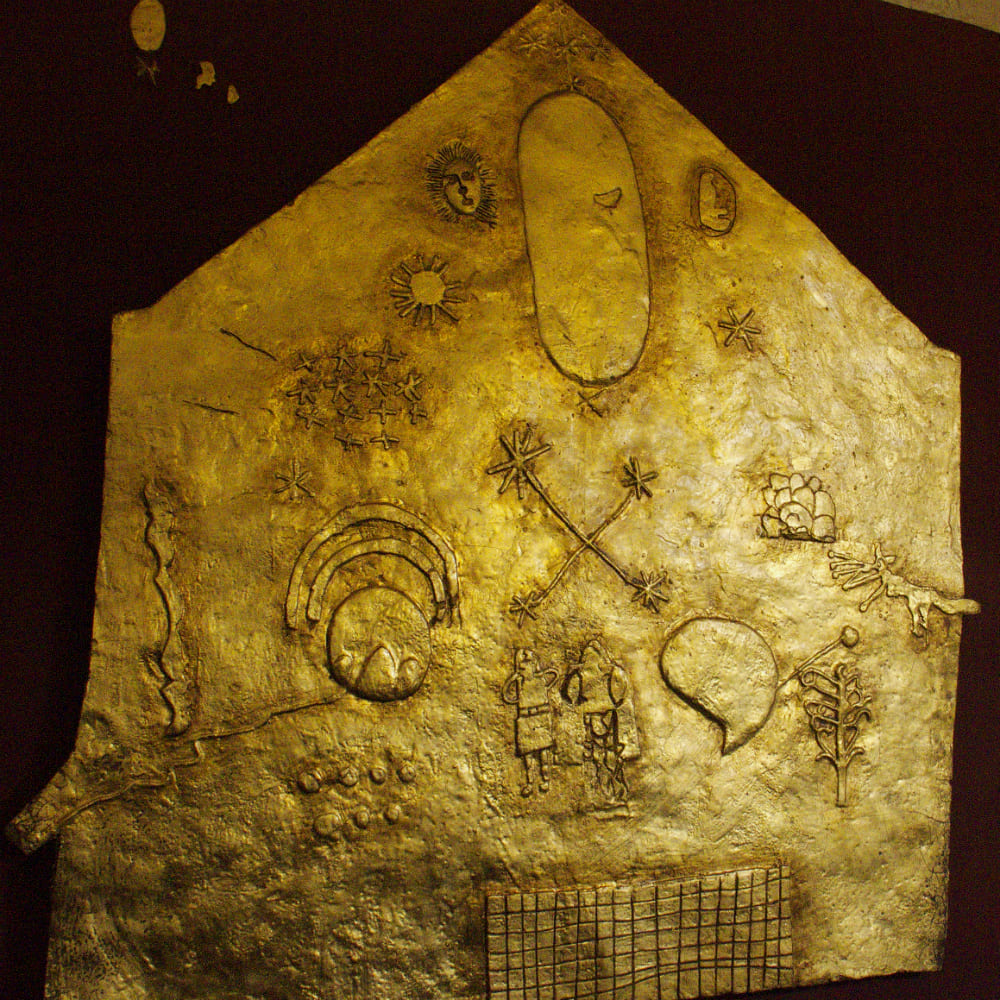
The land sector contains the following figures. On the far right, a quadruped with the legend coa or chuquechinchay, being the chuquechinchay, according to the same chronicler, “the father of the otorongos” and, in addition, one of the names of Venus in the afternoon. On the left, with the global designation “the world or the earth”, three hills and the spring of a river are represented in a circle, with the legend: “Pilcomayo”. Inside the circle we also read the word mama pacha (“the earth and the mother of the lands”) that goes along with camac pacha (“fertile earth”), written outside the circle. Below we see seven small circles with the legend: the eyes, ymaymana ñaoraycunap ñauin. To the right, another natural hydraulic system is drawn with the puquio that is the spring, with the ditch that carries the water to the Mama Cocha (which is “the Lake Madré and the mother of the lakes”). On the right is a tree. Between the two natural hydraulic systems there is a man and a woman. There is no possible doubt about the identification of this couple, since Pachacuti himself points out in his comment written above in the drawing that it is the first couple created by the Maker, that is, Adam and Eve (“this one is male, this one be a woman ”). We should note that the chronicler wanted to arrange the entities in the vertical central sector of his drawing also with a symbolic intention. Above is God, the king of the world, the Lord “of heaven and earth”, and immediately below him, is the man king of the earth, at whose service are all other creatures, according to the Christian philosophy of Creation. Pachacuti adopts the Christian concept of opposition between macrocosm and microcosm.
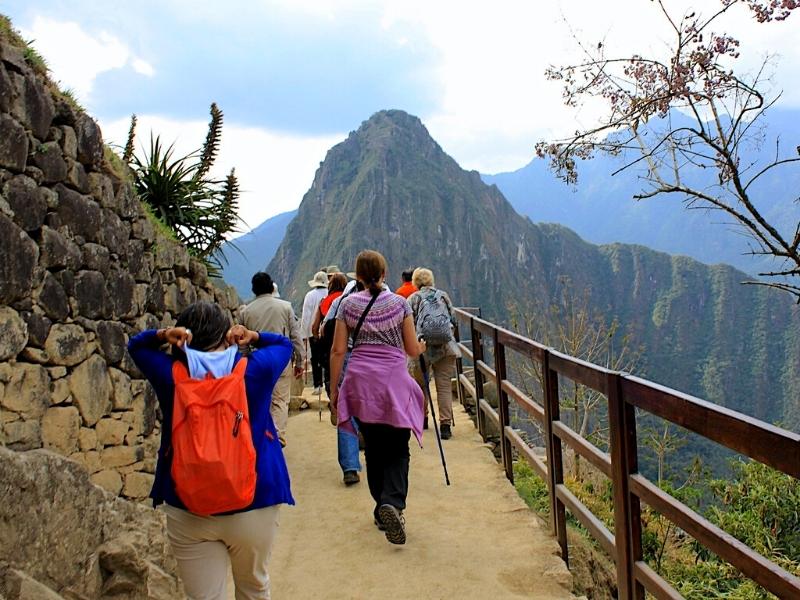
Get to know the majestic city of Cusco, cradle of the greatest civilization in South America, the Incas and their great works of engineering, the citadel of Machu Picchu by train.


Enjoy an incredible vacation, in the heart of the Inca empire, Cusco, our travel program will take you to the most famous tourist attractions of Cusco, such as the Sacred Valley of the Incas, Machu Picchu, in very cozy hotels.


Your luxury trip to Peru includes a selection of Andean and Amazonian landscapes. We will help you to explore this welcoming and varied country, planning each step of your trip, with the best services. With the help of amazing expert guides, you can enjoy all that Peru has to offer, every detail is well taken care of.

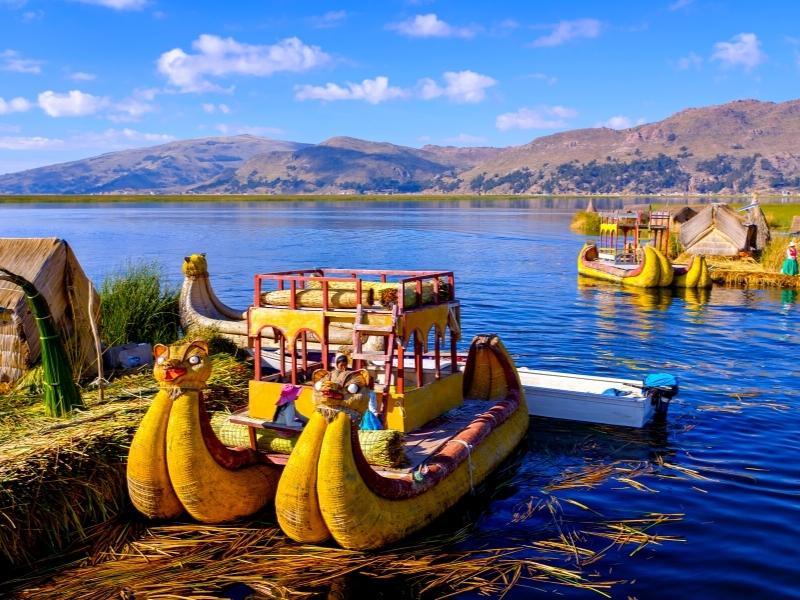
The wonders of Peru await you as you hike through the Manu Amazon rainforest, traverse the plains of the Sacred Valley of the Incas, and stroll the cobbled streets of Cusco on this 15-day trip from Lima. Search for monkeys and medicinal plants in the Amazon, travel the ancient road to Machu Picchu, experience a stay in a traditional community on the shores of serene Lake Titicaca.

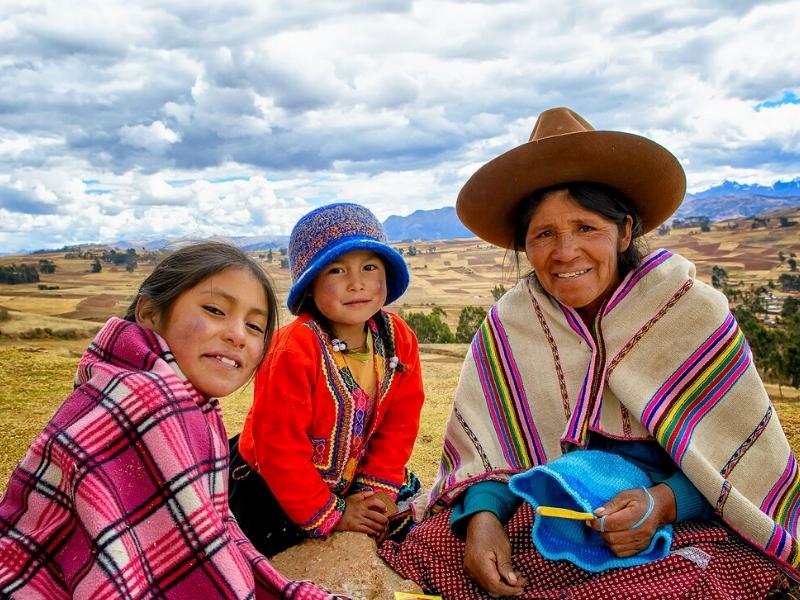
The top sights of Peru will leave all the family thrilled by the scenic grandeur, ruined temples, colonial cities, amazing inca trail to Machu Picchu, the Inca Lost City, once buried under the tropical forest which surrounds it.


Cusco, the former capital of the Inca Empire, is one of the most fascinating cities in South America. Just walking through the city center you can see the incredible mix of Inca and colonial architecture, watch the merging of indigenous and Spanish influences, and feel the history that flows through every cobblestone street.
